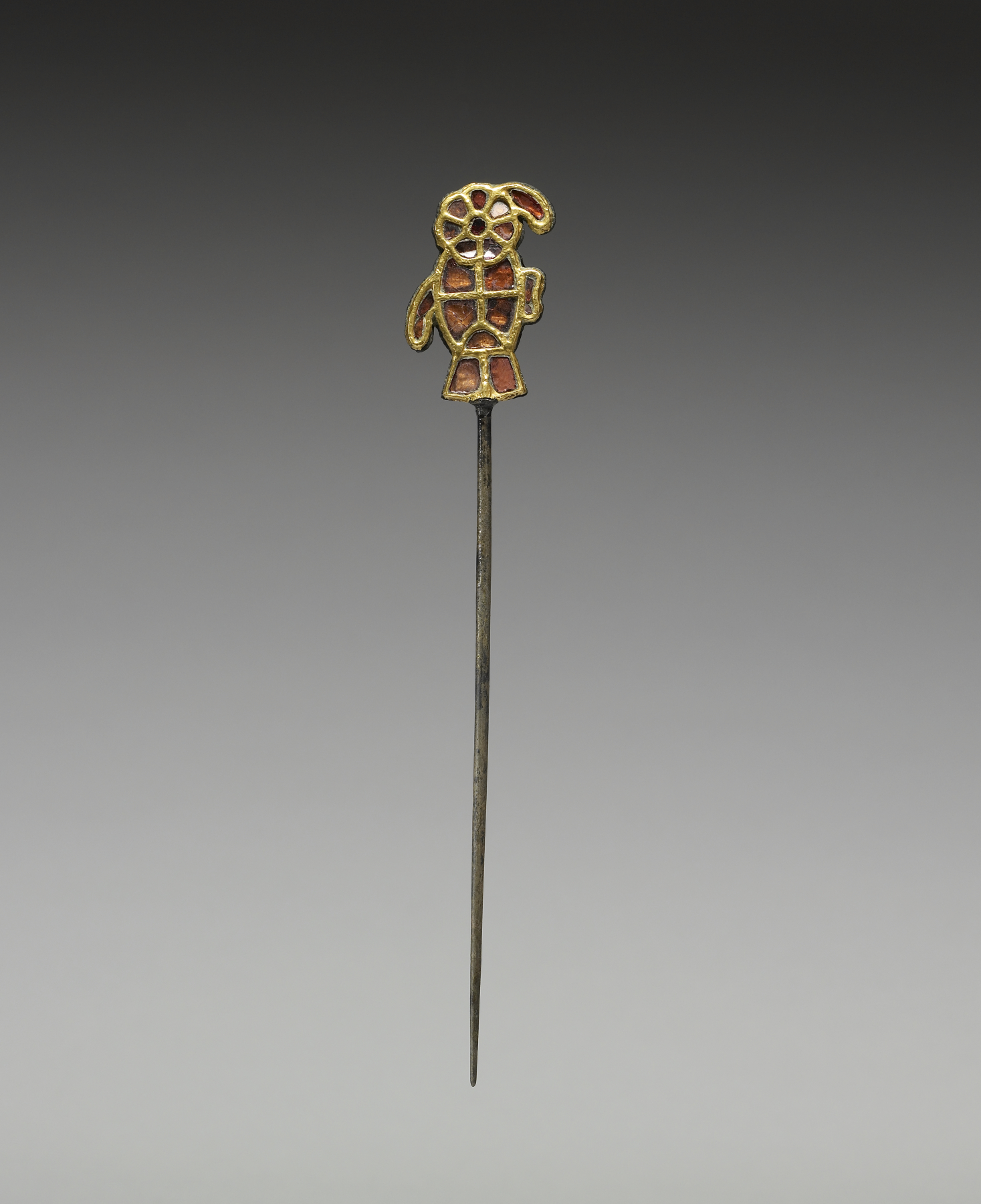Hair Pin
This long pin terminates in a stylized bird. Such cloisonné bird pins were developed in southern Russia about AD 400 and were carried westward with the migrating peoples. They are found most often in northeastern France and the Rhineland, where they were popular until the second half of the 6th century.
Provenance
Provenance (from the French provenir, 'to come from/forth') is the chronology of the ownership, custody, or location of a historical object. Learn more about provenance at the Walters.
Carlebach Gallery, New York [date and mode of acquisition unknown]; Walters Art Museum, 1959, by purchase.
Exhibitions
| 1984-1987 | Objects of Adornment: Five Thousand Years of Jewelry from the Walters Art Gallery, Baltimore. Cooper-Hewitt National Design Museum, New York; Chrysler Museum of Art, Norfolk; Carnegie Museum of Art, Pittsburgh; San Antonio Museum of Art, San Antonio; Philbrook Museum of Art, Tulsa; Honolulu Academy of Arts, Honolulu; New Orleans Museum of Art, New Orleans; Milwaukee Art Museum, Milwaukee; Minneapolis Institute of Art, Minneapolis; Toledo Museum of Art, Toledo; The John and Mable Ringling Museum of Art, Sarasota. |
| 1987 | Jewelry from the Walters Art Gallery and the Zucker Family Collection. The Walters Art Gallery, Baltimore. |
| 1979-1980 | Jewelry - Ancient to Modern. The Walters Art Gallery, Baltimore. |
Conservation
| Date | Description | Narrative |
|---|---|---|
| 4/19/1984 | Treatment | cleaned |
Geographies
Germany, Rhineland
(Place of Origin)
France (Place of Origin)
Measurements
6 1/2 x 1 1/16 x 3/16 in. (16.5 x 2.7 x 0.4 cm)
Credit Line
Museum purchase with funds provided by the S. & A.P. Fund, 1959
Location in Museum
Centre Street: Third Floor: Migration and Early Medieval Art
Accession Number
In libraries, galleries, museums, and archives, an accession number is a unique identifier assigned to each object in the collection.
In libraries, galleries, museums, and archives, an accession number is a unique identifier assigned to each object in the collection.
57.1883


